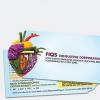Hi Omega,
Ideally the answer is, of course, zero, since no metallic contamination is optimum. If otherwise the product may be considered "dangerous" or possibly considered not "dangerous" but "unwholesome" and therefore equally rejectable.
(A haccp critical Limit is usually, theoretically, based on "safety" but may be effectively superceded by "Regulatory").
A suggested most conservative, operational, answer for your own instrument is -
the Critical Limit equals the Limit of Detection (LOD) for the specific food matrix involved / specific test piece material involved-accessible /given Machine settings.
So, briefly, using a standardised Procedure/Machine settings, you start with an easily, consistently, detectable (certified) test piece size of defined material, (eg SS)/given food matrix-packaging. Then proceed with smaller test sample sizes until an "unsatisfactory" result is obtained. The penultimate test size to the "unsatisfactory" sample represents the LOD for the conditions of the test series.
Whether the above will be Regulatorily/ auditorially acceptable may depend on aspects additional to the practical elements in previous post such as location/industry/FS Standard.
There are many similar queries to yr own on this forum. Numbers which were found to be "acceptable" vary considerably. The discussions include several threads related to the US Baking Industry.


















